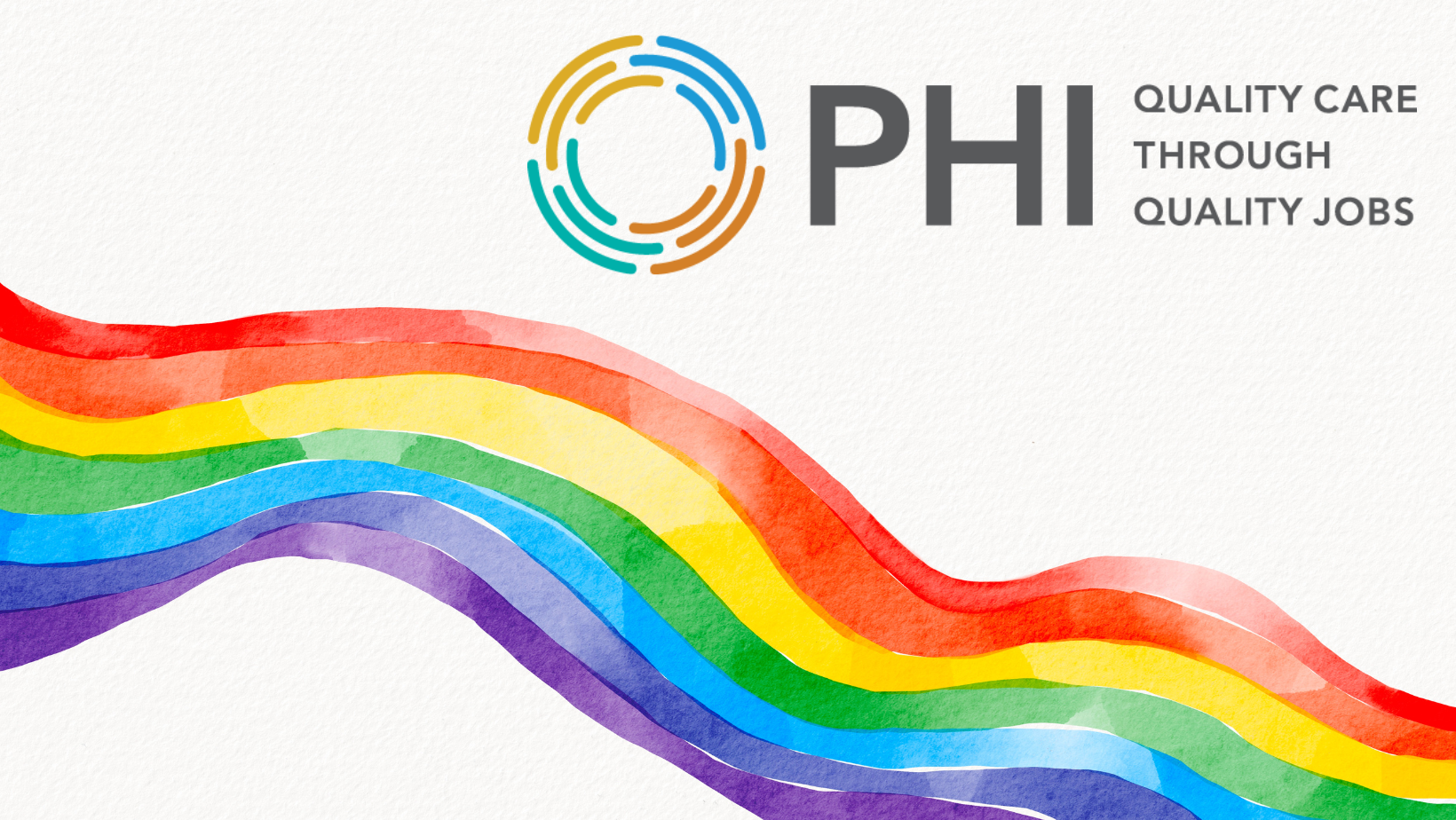Four Reasons Why Long-Term Care Should Act This Pride Month

As part of Pride Month every June, communities across the country celebrate the lives of lesbian, gay, bisexual, transgender, and queer (LGBTQ+) people, recognizing their enormous contributions to society. Yet it’s also a time to consider the needs of this diverse population and how to advance their rights and improve their overall well-being.
In this context, why should long-term care leaders provide targeted support for LGBTQ+ individuals—both as direct care workers and as residents and clients? Here are four reasons.
1. LGBTQ+ older adults are growing rapidly as a population, and they have profound hardships as they work and live in long-term care settings.
As with the general population of older adults, LGBTQ+ older people are a sizable and growing population. About 2.4 million people age 65 and older (and 7 million age 50 and above) in the U.S. self-identify as LGBTQ+, a number that will nearly double by 2040. As medical advances extend the average lifespan—and as more people openly self-identify as LGBTQ+—these numbers will likely grow much larger. Unfortunately, because of a lifetime of discrimination, LGBTQ+ older adults suffer disproportionately from various physical and mental health issues, including high rates of cardiovascular disease, diabetes, depression, and more. Threatening their fragile health is the fact that they often encounter health and long-term care environments that are unwelcoming, even hostile, to their sexualities and gender identities.
2. LGBTQ+ individuals with disabilities must deal with multiple forms of discrimination rooted in homophobia, transphobia, ableism, and more that need addressing as they navigate long-term care.
Research shows that one in three LGBTQ+ individuals has at least one disability, compared to one in four non- LGBTQ+ individuals (i.e., those who are cisgender and heterosexual). Because of the stigma and discrimination leveled at both LGBTQ+ people and persons with disabilities, LGBTQ+ people live with the compounded realities of these inequities, which have severe consequences. As one example, according to the Human Rights Campaign, “Disabled LGBTQ++ people are also more likely to face adverse economic outcomes, such as poverty, due to earning less for equal work, facing higher unemployment or lacking access to inclusive workplace benefits.” These intersecting inequities are shaping the lives of LGBTQ+ people throughout the long-term care system.
3. LGBTQ+ direct care workers need targeted employment support to protect them from discrimination and harassment—and better jobs overall.
For the 7 percent of Americans who self-identify as LGBTQ+, discrimination in the workplace is a disruptive reality. Despite new federal protections related to employment, research shows that workplace discrimination and harassment are widespread for LGBTQ+ people, especially transgender workers. For example, in a recent study, more than one in three LGBTQ+ respondents reported experiencing discrimination and harassment in the last five years, including being fired, not hired, or harassed because of their sexual orientation or gender identity. For workers, employment discrimination can harm their economic security and physical and mental health. For their employers, employment discrimination can lead to decreased productivity, absenteeism, increased job turnover, and legal troubles. LGBTQ+ direct care workers are managing all these inequities while working in poor-quality jobs.
4. State governments have recently grown even more hostile toward LGBTQ+ people, which makes it harder for those working and living in long-term care settings.
The promise of justice and equality remains grossly unfulfilled for LGBTQ+ people. Worse, government hostility toward them has skyrocketed in recent years. According to the ACLU, as of June 6, 2023, 491 anti- LGBTQ+ bills have been introduced across state legislatures, including measures to: limit accurate gender information on IDs, weaken nondiscrimination laws, restrict free speech (including by censoring books and drag show performances), limit access to healthcare, and more. In comparison, 180 such bills were introduced in 2022, and 324 were introduced between 2018 and 2021 combined.
WHAT CAN LONG-TERM CARE LEADERS DO?
The Long-Term Equality Index, led by the Human Rights Campaign and SAGE, is one place to start. This index measures the extent to which congregate care settings have non-discrimination policies, provide LGBTQ+ cultural competency training, offer equal treatment and access to health-related benefits and policies, and publicly demonstrate their commitment to LGBTQ+ communities. (For disclosure purposes, I serve on the national advisory board for this project).
Two hundred long-term care communities across 34 states participated in the inaugural report for this index, released in May of this year—and there are plans in place to grow the index substantially. If eligible, other long-term care providers can either participate in future versions of this index or draw from the index framework to create an LGBTQ+-friendly environment for their clients, residents, and workers.
As the longstanding attacks on LGBTQ+ people continue, long-term care settings must be welcoming for this vibrant yet marginalized population. We all deserve to live, work, and age with dignity.





